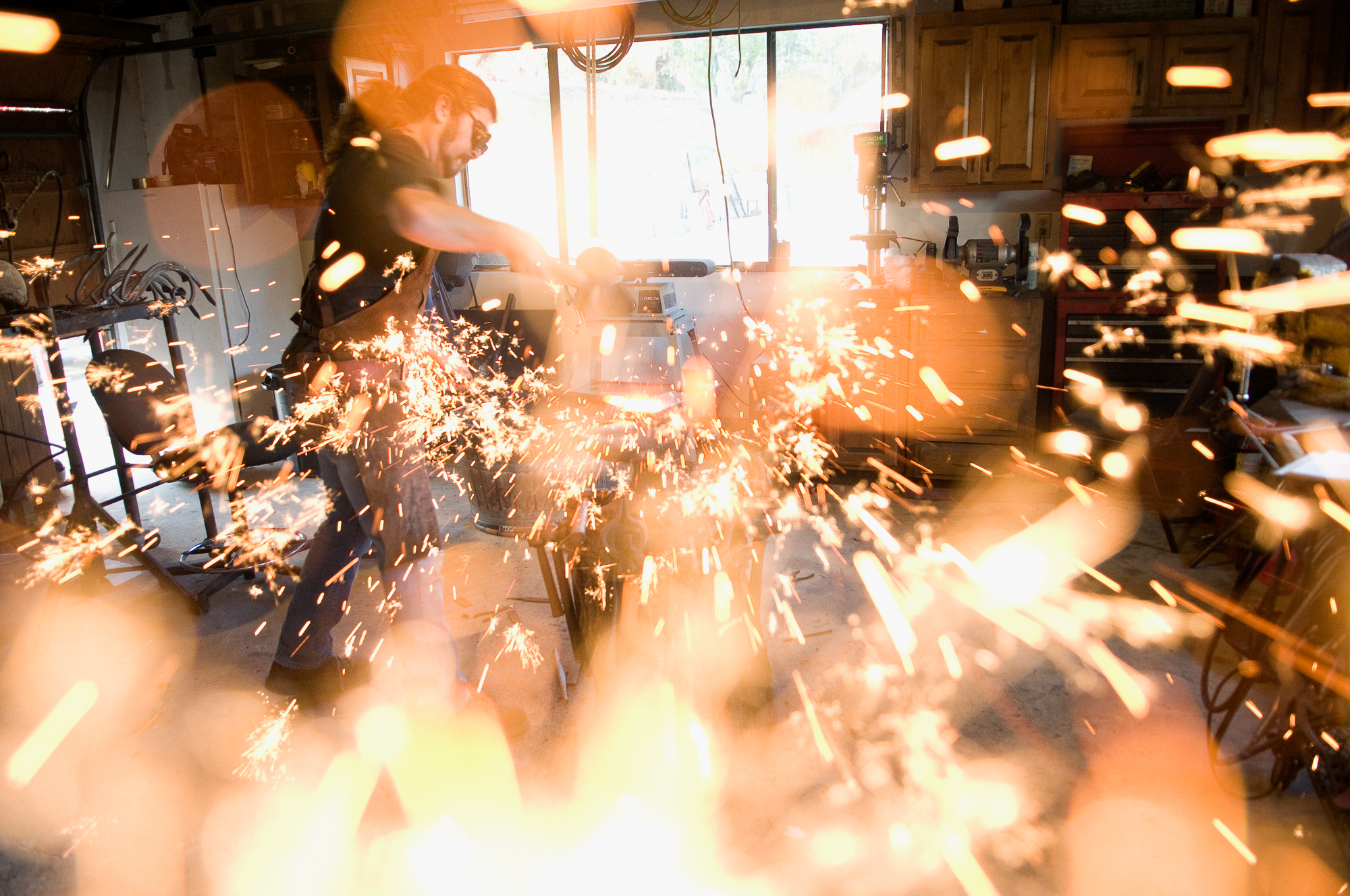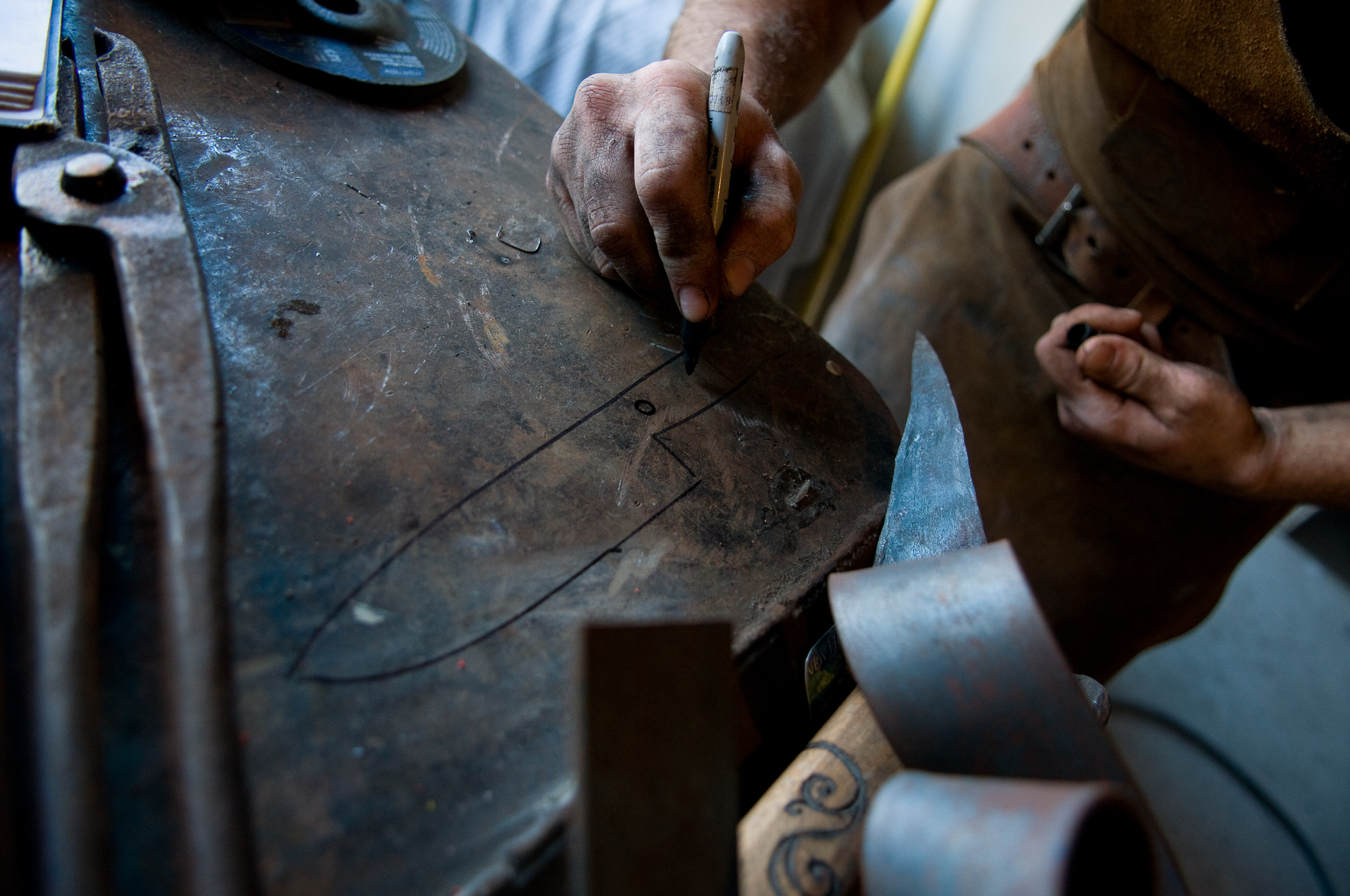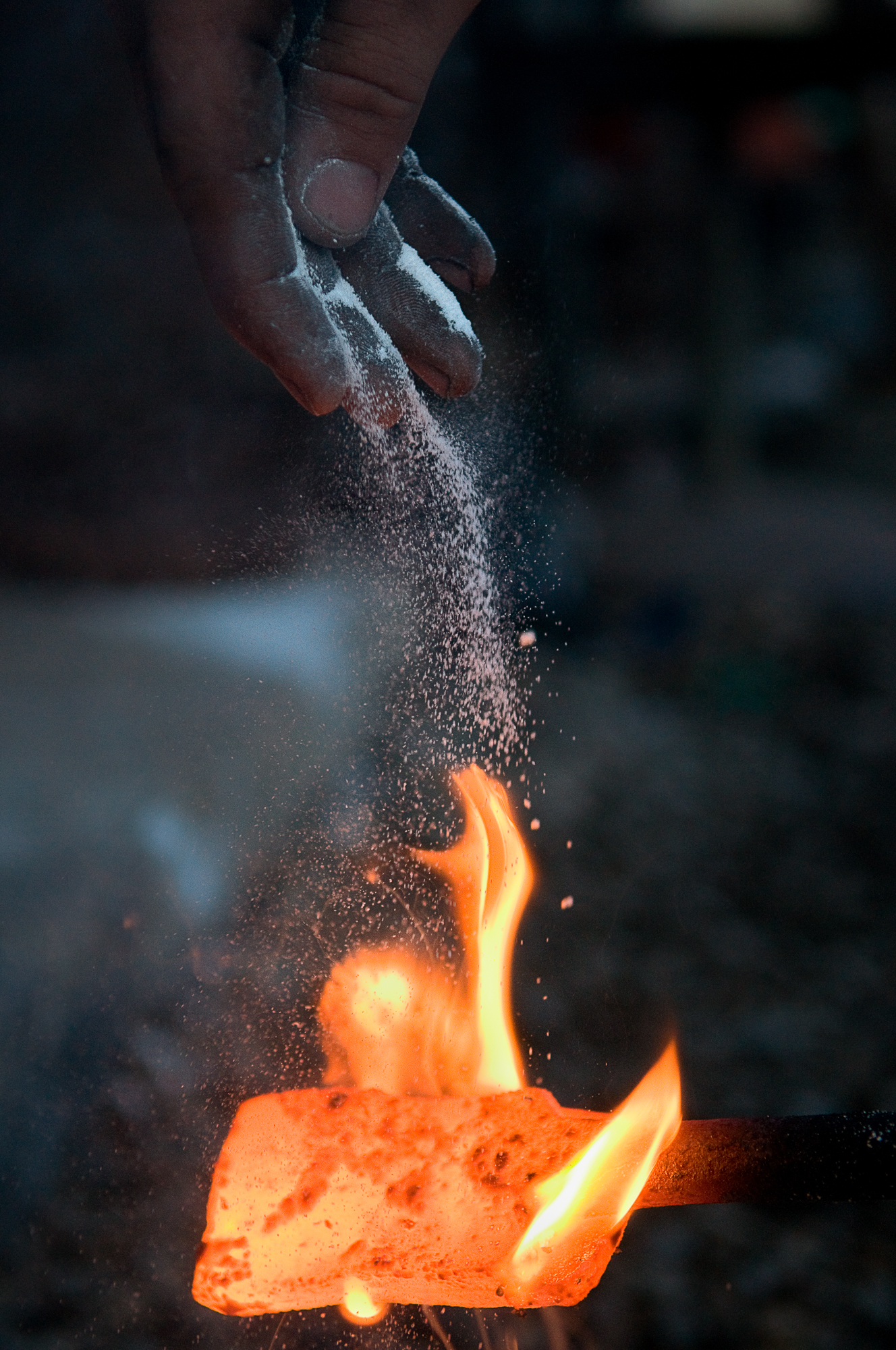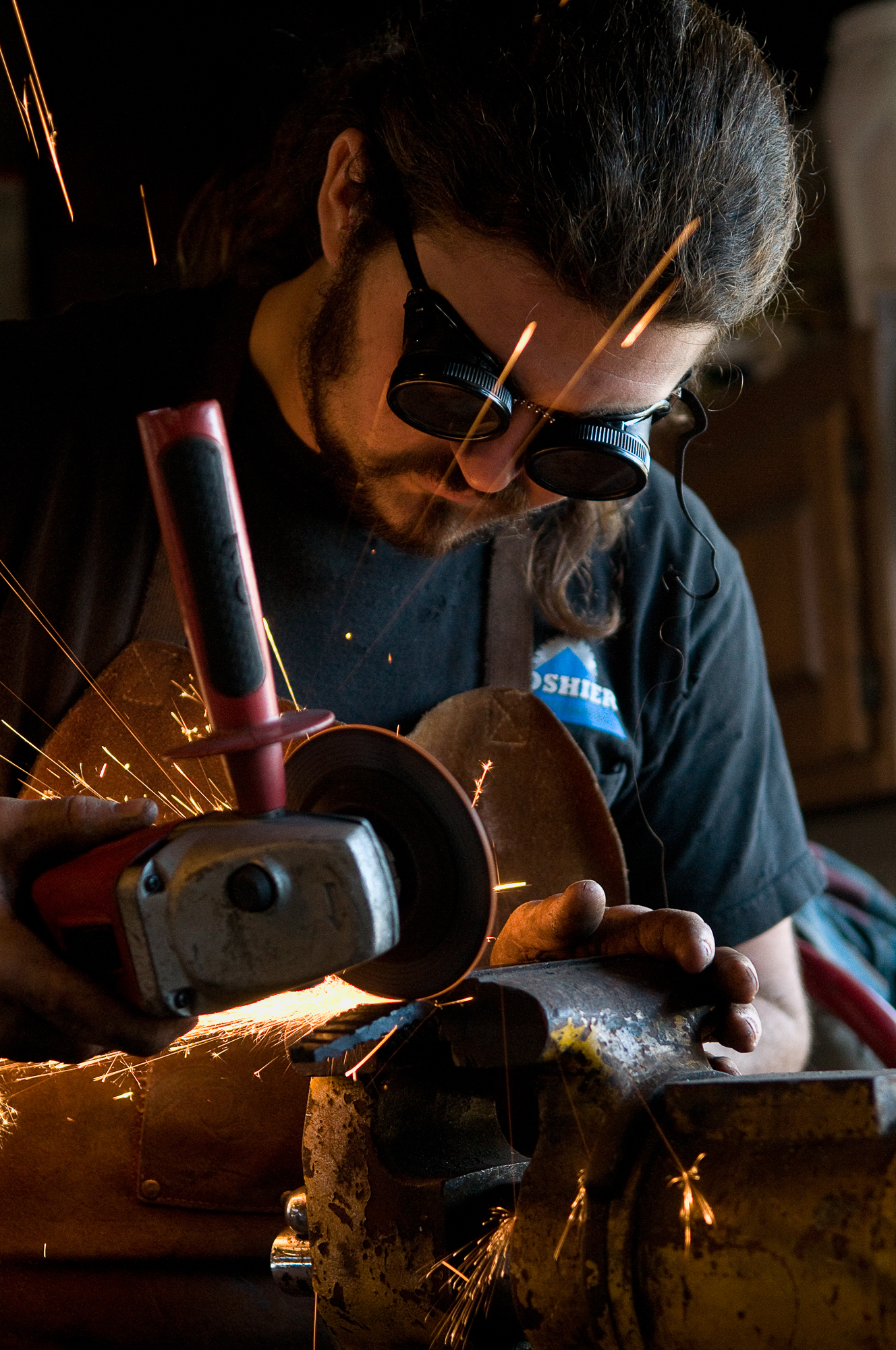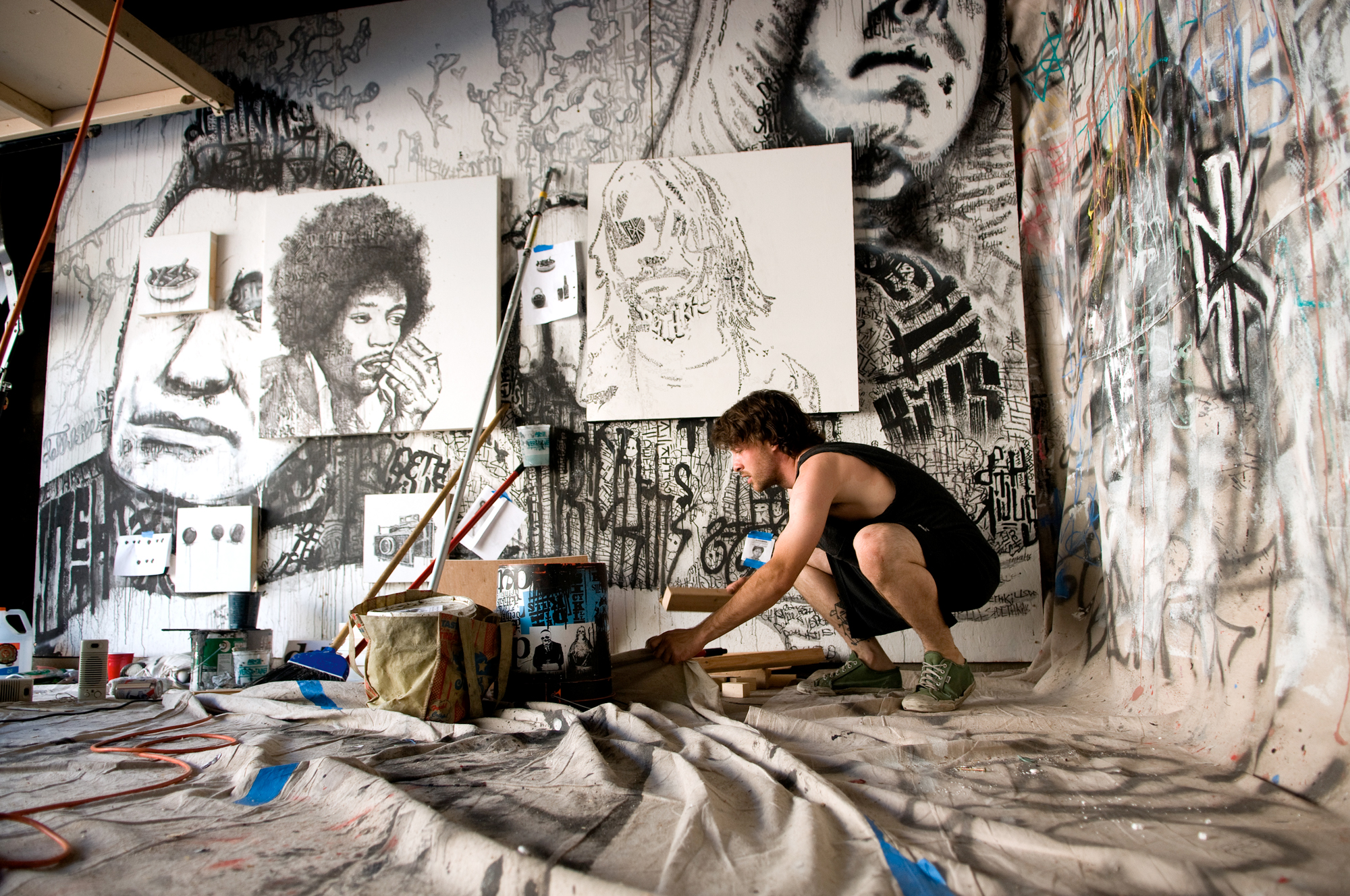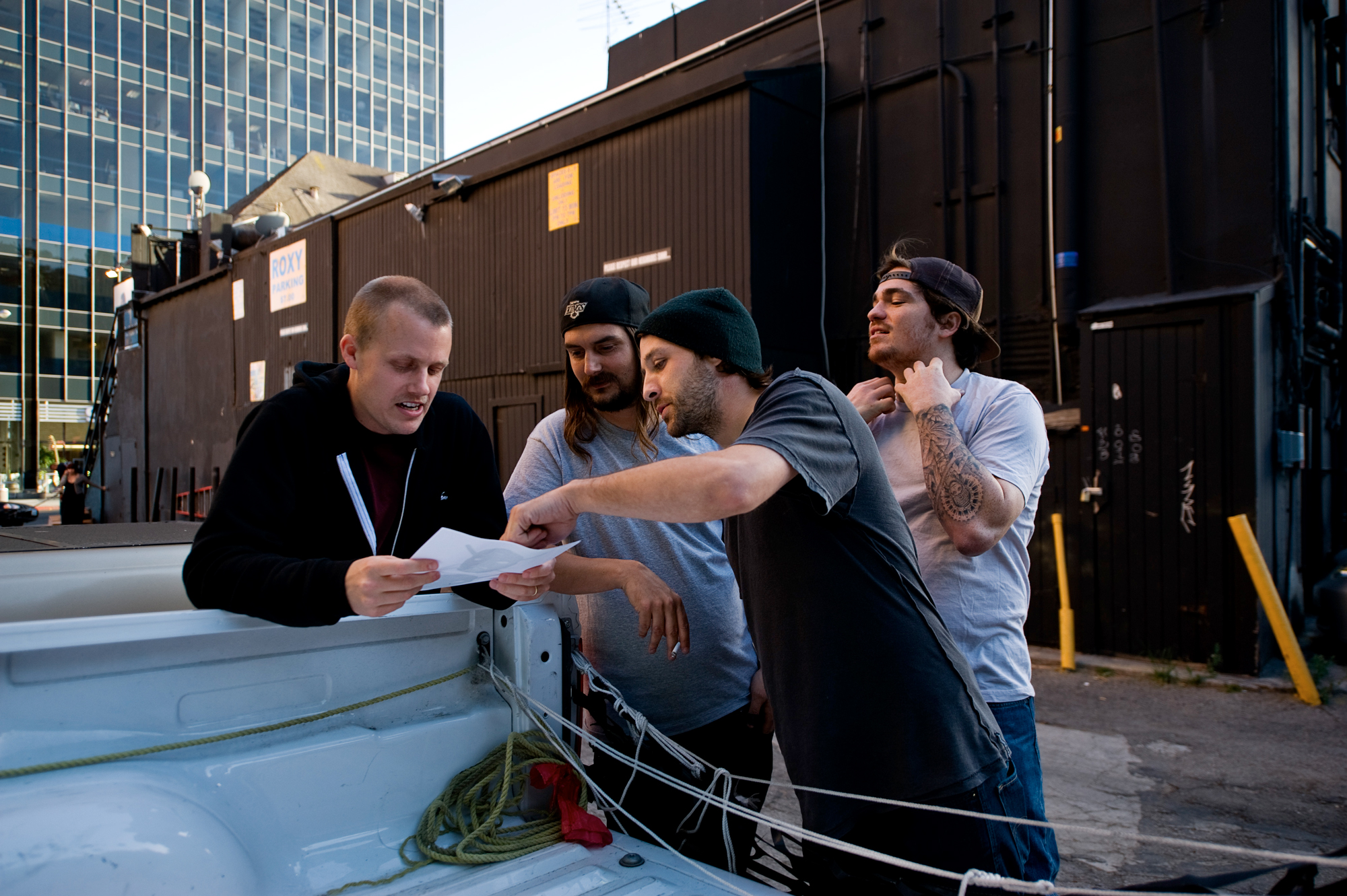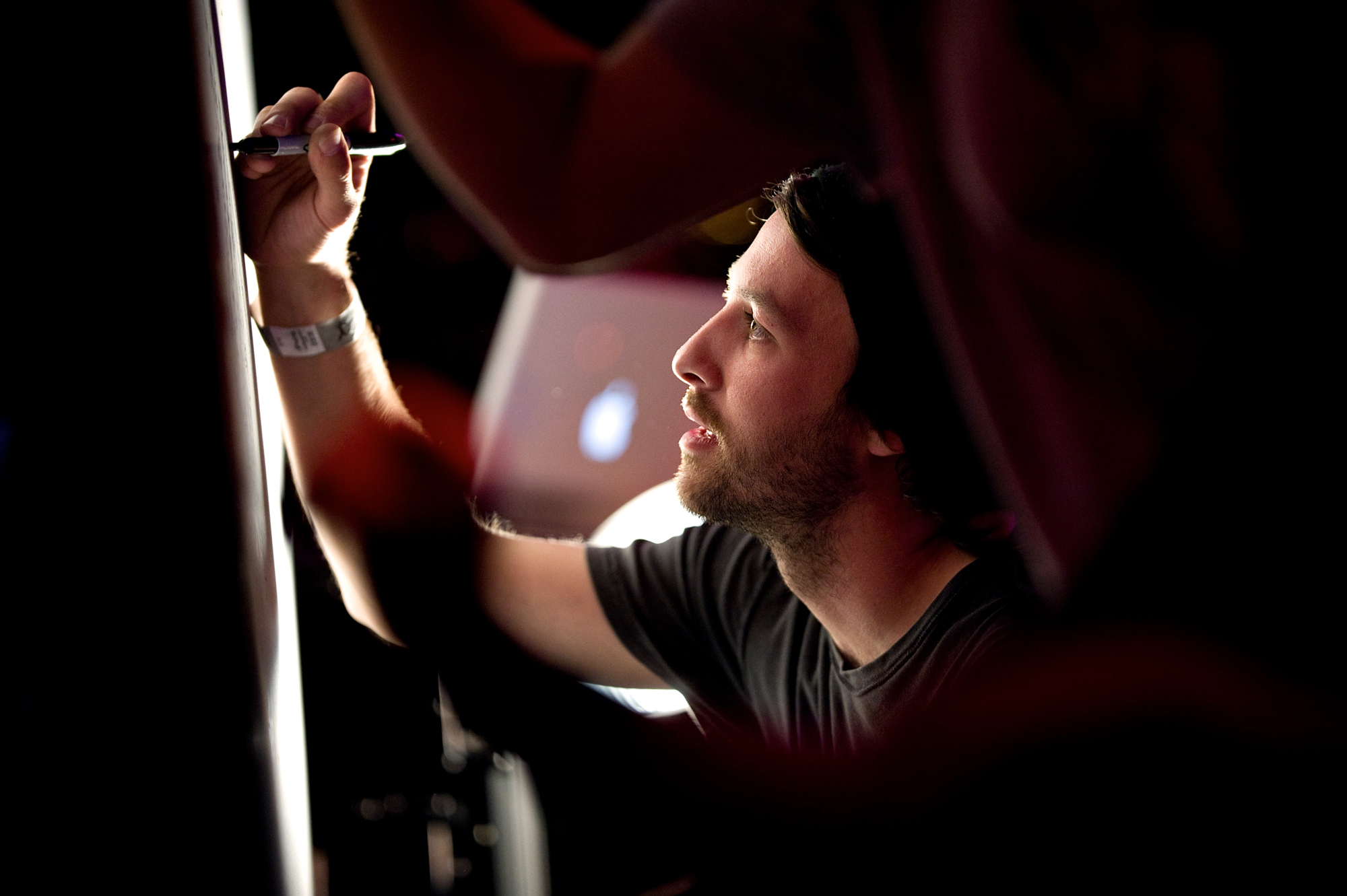Two drops of water illustrate an interference pattern, captured at Brooks Institute’s industrial studio 2. When two drops of water fall side by side and land into the same body of water, they will both create concentric rings on impact, which will spread out and eventually collide with each other. The areas where these ripples intersect are called an interference pattern. This physical process isn’t exclusive to water, light also behaves this way, as well as sound.
Holography, a technique that produces three-dimensional images using lasers (Light Amplification by Stimulated Emission of Radiation), relies on the interference of light beams from a laser or other coherent light source.

























